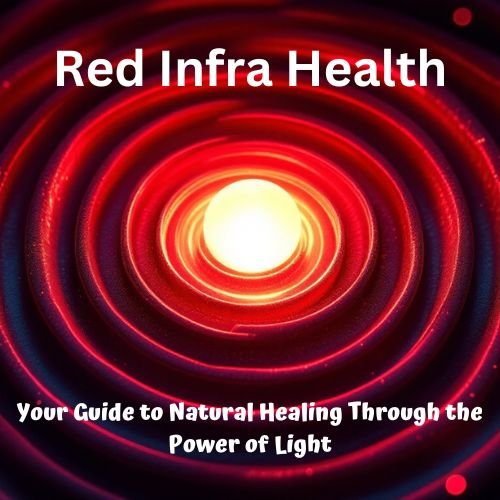Natural wavelengths stimulate your body's collagen production through a powerful cellular response. When specific light frequencies between 620nm to 1300nm penetrate your skin cells, they interact directly with your mitochondria, boosting ATP production and cellular energy. This enhanced energy activates fibroblasts, which rapidly produce new collagen fibers while reducing inflammation. Studies show up to 86% improvement in skin rejuvenation with this therapy, while also improving elasticity by 19% and reducing wrinkles by 36%. Understanding the science behind these remarkable results reveals why natural wavelength therapy has become a game-changer in skin health.
The Science Behind Light Waves

Light waves serve as powerful tools in modern skin therapy, working through precise physical mechanisms to enhance cellular function. When you expose your skin to specific wavelengths, particularly red light (635 nm) and near-infrared light (830 nm), you're activating a complex chain of cellular responses that boost collagen production.
Your skin's mitochondria, the powerhouses of your cells, directly absorb these light particles. This interaction triggers increased ATP production, providing more energy for cellular repair and regeneration. LED therapy devices can be safely used at home for daily skin treatments.
The depth of light penetration matters substantially – different wavelengths reach various skin layers, with near-infrared light penetrating deeper than visible red light.
You'll get the most benefit from combining wavelengths, as this dual approach targets multiple photoacceptor molecules. For instance, while red light at 635 nm stimulates surface-level collagen production, near-infrared light at 830 nm reaches deeper tissue layers, enhancing fibroblast activity more effectively.
This complementary action creates a more thorough treatment effect, as each wavelength contributes uniquely to cellular stimulation and collagen synthesis. Understanding these mechanisms helps you appreciate why specific wavelengths are chosen for different skin treatments.
Natural Wavelengths Meet Skin Cells
When you're looking to boost collagen production through light therapy, choosing the right wavelengths (630-700 nm and 830 nm) makes all the difference in targeting your skin cells effectively.
Your mitochondria, the cellular powerhouses, respond to these specific wavelengths by ramping up ATP production and activating essential fibroblast growth factors.
This cellular response triggers your skin's natural collagen-producing mechanisms, leading to enhanced collagen synthesis and improved skin structure. Through consistent treatment sessions, clinical study results demonstrate significant improvements in skin texture and firmness for over 90% of patients.
Wavelength Selection Matters Most
Selecting the right wavelength for collagen therapy isn't a game of chance – it's rooted in precise science. When you're looking to boost collagen production, the wavelength range of 620nm to 1300nm offers the best results, with near-infrared light showing superior bio-stimulation effects compared to visible red light.
The depth of light penetration plays a vital role in treatment effectiveness. Higher exposure doses above 10 J/cm² can actually inhibit cellular responses and reduce therapeutic benefits. While shorter wavelengths target surface-level concerns, longer wavelengths between 700nm and 1300nm penetrate deeper into your skin, making them ideal for collagen stimulation. Here's what you need to know about wavelength targeting:
| Wavelength Range | Target & Effect |
|---|---|
| 400nm-470nm (Blue) | Upper skin layers, surface treatment |
| 560nm-590nm (Yellow) | Middle layers, cellular activation |
| 620nm-750nm (Red) | Deep layers, collagen stimulation |
| 830nm (Near-IR) | Maximum bio-stimulation |
| 700nm-1300nm | Optical therapy window |
Clinical studies consistently show that combining wavelengths of 635nm and 830nm delivers the most significant impact on fibroblast activity and collagen synthesis. You'll find the greatest success when using these scientifically-proven wavelength combinations for your collagen therapy treatments.
Mitochondrial Response to Light
The fascinating dance between natural wavelengths and cellular function begins at the mitochondrial level, where your skin cells respond to specific light frequencies between 600-900 nm.
When these wavelengths penetrate your skin, they interact with chromophores like hemoglobin and cytochrome c oxidase (COX), triggering a cascade of cellular responses that boost your skin's energy production.
Your mitochondria's response to light therapy directly impacts your skin's health through:
- Enhanced ATP production – When light hits your skin cells, it stimulates oxygen consumption and ATP generation, providing more energy for cellular repair and regeneration
- Increased protein synthesis – With more cellular energy available, your skin cells ramp up their production of essential proteins like collagen and elastin
- Improved cellular function – The boost in mitochondrial activity leads to better overall cell performance, including more efficient waste removal and nutrient absorption
This mitochondrial stimulation creates a foundation for lasting skin improvements. Research shows that oxidative phosphorylation efficiency is 15 times greater than anaerobic glycolysis, making light therapy particularly effective for skin cell energy production. By targeting these cellular powerhouses with specific wavelengths, you're activating your skin's natural ability to repair and rejuvenate itself, leading to firmer, healthier-looking skin over time.
Cell-Level Collagen Activation
Your skin's remarkable collagen-building process springs to life when natural wavelengths meet your skin cells at the cellular level. When red and near-infrared light penetrates your skin, it triggers a cascade of cellular responses that boost collagen production. Your fibroblasts, the key players in collagen synthesis, become activated and begin producing new collagen fibers. The anti-inflammatory effects create an optimal environment for sustained collagen production.
| Cellular Response | What Happens | Benefits |
|---|---|---|
| Energy Boost | Mitochondria produce more ATP | Powers collagen synthesis |
| Fibroblast Activation | Cells begin rapid collagen production | New collagen formation |
| Growth Factor Release | Stimulates cellular repair mechanisms | Enhanced healing |
| Protein Synthesis | Increases collagen and elastin creation | Improved skin structure |
You'll find that this cellular activation doesn't just produce temporary results. The light therapy triggers sustained collagen production through continuous fibroblast stimulation. Your skin cells respond by creating new collagen fibers that improve elasticity and firmness. This natural process doesn't require invasive procedures or medications – your cells simply respond to the wavelengths they're designed to interact with, making it an effective approach for skin rejuvenation and healing.
Mitochondrial Power Unleashed

Your body's cellular powerhouses, mitochondria, spring into action when exposed to red and near-infrared light wavelengths.
These natural wavelengths trigger your mitochondria to boost ATP production, providing the essential energy needed for collagen synthesis and other crucial cellular processes.
Through this light-driven boost in energy production, your cells receive the power they need to generate more collagen, supporting skin health and healing. This process relies heavily on cyclophilin D regulation, which helps maintain optimal ATP production for cellular repair.
Energy Production Boost Explained
While scientists have long understood the importance of cellular energy, red light therapy's ability to supercharge mitochondrial function has revolutionized our approach to natural healing. When you undergo red light therapy, your cells' powerhouses – the mitochondria – respond by ramping up their energy production. This boost happens through photobiomodulation, where specific wavelengths of red and near-infrared light stimulate cytochrome C oxidase, enhancing ATP production. The therapy is particularly effective in muscle and nerve cells, which naturally contain the highest concentrations of mitochondria.
Here's what makes this therapy uniquely effective for boosting your cellular energy:
- Direct mitochondrial activation through light absorption by chromophores like hemoglobin and myoglobin, leading to improved cellular respiration
- Enhanced oxygen consumption and membrane potential in mitochondria, resulting in more efficient energy production
- Increased ATP generation and protein synthesis, supporting essential cellular functions including collagen production
Unlike other energy-boosting methods such as calorie restriction or exercise, red light therapy directly targets your mitochondria without requiring lifestyle changes. You'll benefit from improved cellular energy production that supports collagen synthesis by fibroblast cells, leading to better skin, bone, and joint health.
Clinical evidence consistently shows this non-invasive approach effectively enhances mitochondrial function and promotes natural healing processes.
Light-Driven Cellular Powerhouse
Deep within every cell, mitochondria serve as microscopic power plants that convert light energy into cellular fuel through a remarkable process called photobiomodulation.
When you expose your cells to red and near-infrared wavelengths, you're triggering a natural boost in cellular energy production that's essential for top-notch health. Nitric oxide dissociation from cytochrome C oxidase occurs during this process, further optimizing cellular energy output.
Your mitochondria respond to these specific wavelengths by accelerating ATP production, the primary energy currency of your cells. This enhanced cellular respiration doesn't just power basic functions – it's vital for collagen synthesis and tissue repair.
As your mitochondria become more efficient, they enable fibroblast cells to produce higher levels of natural collagen, directly improving your skin's structure and appearance.
The power of light-driven cellular energy extends beyond skin health. You'll experience improved cognitive function, increased physical stamina, and enhanced tissue repair throughout your body.
Clinical studies have consistently shown that this mitochondrial stimulation leads to measurable improvements in collagen density and skin complexion. By enhancing your cellular powerhouse through light therapy, you're supporting not just surface-level improvements but deep, lasting cellular health that manifests in multiple aspects of your wellbeing.
ATP Generation Through Light
Beneath the surface of every cell, light therapy releases a remarkable cascade of energy production through your mitochondria's power-generating machinery. When red and near-infrared light penetrates your tissue, it targets cytochrome c oxidase, a key enzyme in your cellular respiratory chain. This interaction breaks the bond between nitric oxide and the enzyme, instantly boosting your mitochondria's efficiency in producing ATP.
Scientists have observed that improved athletic performance results from this enhanced cellular energy production. Your cells respond to this light-driven boost in three distinct ways:
- Enhanced oxygen consumption and electron transport accelerate your cellular energy production, giving you more ATP from the same amount of nutrients.
- Improved mitochondrial function leads to increased blood flow and reduced inflammation, creating ideal conditions for collagen synthesis.
- Activated fibroblasts receive more energy to produce collagen, supporting your skin, bone, and joint health.
This natural wavelength therapy doesn't just temporarily energize your cells – it optimizes your entire cellular machinery. By regulating mitochondrial function through light-activated proteins, you're tapping into a fundamental biological process that supports collagen production and overall cellular health.
This enhanced energy availability becomes the foundation for robust collagen synthesis and tissue repair.
Clinical Studies Support Collagen Growth
Recent clinical studies have demonstrated compelling evidence for the effectiveness of light therapy in stimulating collagen growth. You'll find that specific wavelengths, particularly in the red (635-700 nm) and near-infrared (700-1100 nm) ranges, trigger remarkable responses in your skin cells. When these wavelengths penetrate your dermis, they activate fibroblasts, leading to increased collagen production. This natural process requires multiple treatment sessions to achieve optimal results.
| Wavelength Type | Penetration Depth | Primary Benefits |
|---|---|---|
| Red Light | Surface to Mid-dermis | Activates fibroblasts, stimulates ATP |
| Near-Infrared | Deep dermis | Enhances collagen synthesis, promotes healing |
| Dual Wavelength | Multiple layers | Synergistic effects, maximum collagen production |
| Blue Light | Surface level | Supports skin clarity, reduces inflammation |
The research shows you'll experience multiple benefits from this therapy. Your skin's collagen production increases substantially when exposed to these specific wavelengths, particularly when using dual-wavelength treatments. What's especially important to note is that you won't need to worry about side effects – studies consistently show that light therapy is both painless and safe. The treatment's non-invasive nature means you can maintain your daily activities without downtime, while still achieving meaningful improvements in skin elasticity and hydration.
Optimal Light Treatment Parameters

When selecting ideal parameters for light therapy, specific wavelengths prove most effective for stimulating collagen production. Red light and near-infrared wavelengths, particularly 635 nm and 830 nm, penetrate deeply into your skin to boost collagen synthesis.
Your skin's fibroblasts respond especially well to dual-wavelength treatments that combine these specific frequencies, while blue light isn't recommended for collagen production.
Your treatment sessions don't need to be lengthy – you'll see results in under 30 minutes, and there's no downtime required. You can schedule multiple sessions per week, starting with shorter durations as your skin adjusts to the therapy.
The process works by stimulating your skin's mitochondria, which convert light, oxygen, and nutrients into usable energy. This increased cellular energy enables your fibroblasts to produce more collagen naturally.
You'll find the treatment completely painless and safe, even if you have sensitive skin. Clinical studies have confirmed that red light therapy effectively boosts collagen production without side effects, making it a versatile option for treating various skin conditions like wrinkles, psoriasis, and rosacea.
Real Results Through Wavelength Therapy
Scientific evidence confirms the remarkable results of wavelength therapy for collagen production and skin rejuvenation. You'll find that red and near-infrared light substantially boost fibroblast activity, leading to increased collagen synthesis and improved skin elasticity. Studies show up to 36% reduction in wrinkles and a 19% increase in skin elasticity after treatments.
When you undergo wavelength therapy, you're activating powerful anti-inflammatory mechanisms that create the perfect environment for collagen production. Over 90% of study participants report improved skin tone, while 82% notice enhanced smoothness.
Through mitochondrial stimulation, your cells produce more adenosine triphosphate, directly supporting collagen synthesis.
You'll benefit from enhanced blood circulation during treatment, which delivers essential oxygen and nutrients to your skin cells. The therapy's effectiveness isn't just superficial – ultrasonography measurements confirm increased collagen density beneath the surface.
Whether you're using professional equipment or home devices, you can expect consistent results. The treatment's versatility allows you to address various skin conditions, from rosacea to sun damage, and you can combine it with other therapies for enhanced effects.
Frequently Asked Questions
Can I Combine Red Light Therapy With Other Skincare Treatments?
Yes, you can safely combine red light therapy with various skincare treatments. It works well with serums, microneedling, other LED therapies, and facial massages to enhance their effectiveness and boost your skin's health.
How Long Does It Take to See Noticeable Collagen Production Results?
You'll typically notice initial collagen production results within 1-2 months, with skin improvements visible in 1-3 months. For joint health benefits, expect changes in 3-6 months. Results continue improving with consistent treatment.
Are There Any Side Effects From Long-Term Natural Wavelength Therapy?
You'll experience minimal side effects with long-term natural wavelength therapy. The most common issues you might notice are mild eye strain, temporary skin warmth, and occasional dryness, which you can manage with moisturizer.
Does Skin Color or Thickness Affect the Treatment's Effectiveness?
Yes, both your skin color and thickness impact treatment effectiveness. You'll need different energy doses based on these factors, but don't worry – when properly adjusted, the therapy remains effective for all skin types.
Should I Wear Protective Eyewear During Natural Wavelength Therapy Sessions?
Yes, you should always wear protective eyewear during therapy sessions. It'll protect your eyes from potential strain and damage. Even though natural wavelengths are generally safe, it's better to take precautionary measures.
In Summary
You'll find natural wavelength therapy offers a scientifically-proven approach to boost your collagen production. By harnessing specific light frequencies that penetrate your skin cells and energize mitochondria, you're activating your body's natural healing processes. Whether you're fighting aging signs or recovering from injury, proper wavelength exposure can help you achieve firmer, healthier skin through enhanced collagen synthesis. It's time to tap into light's regenerative power.





Leave a Reply